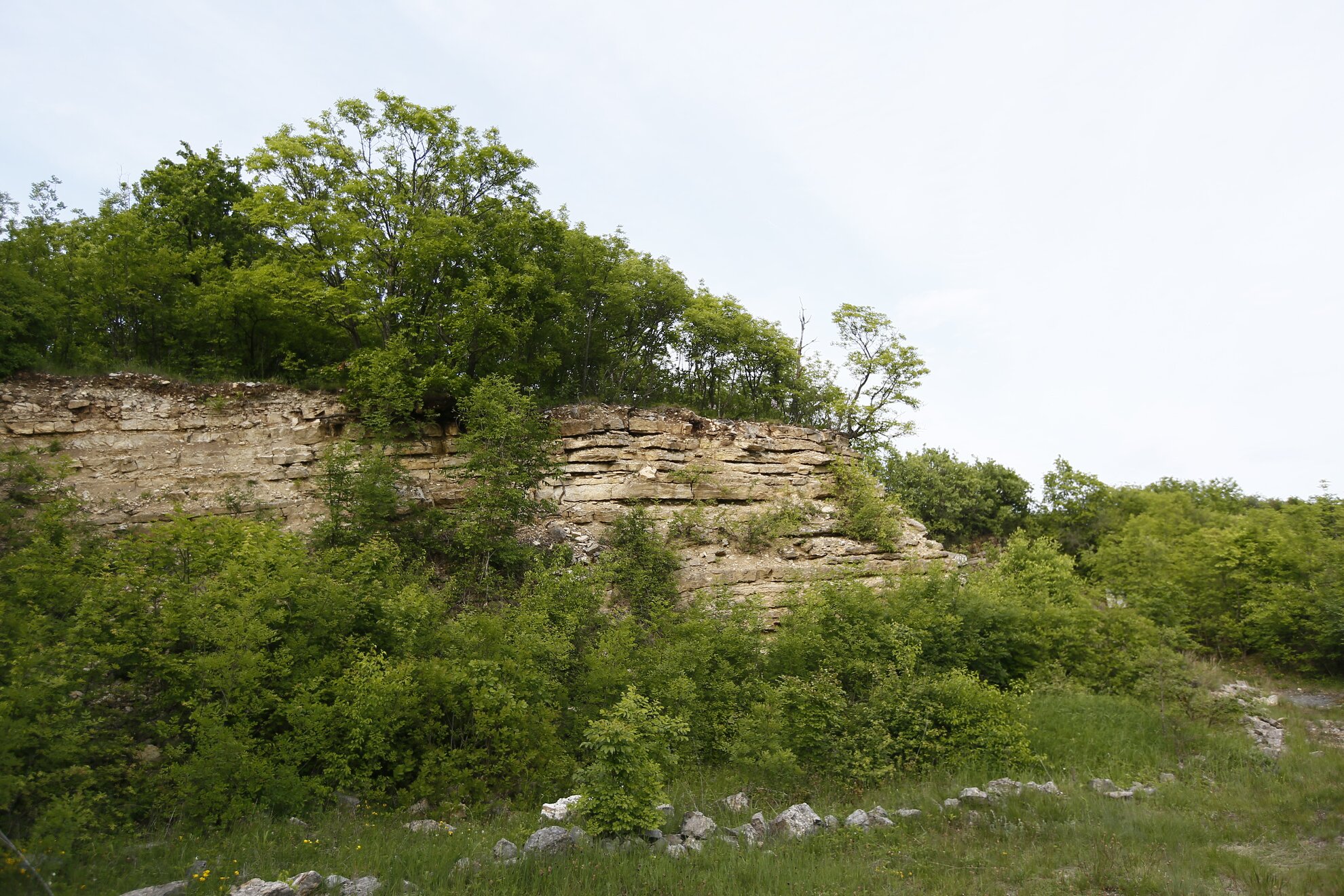Malom-völgy
Usually only locals, mostly schoolchildren from Balatonfüred come here. It’s a bit like Koloska-völgy (Koloska Valley), but it’s less known among hikers. We leave the buzzing crowd behind in a few minutes, and enjoy the silence among the trees of the valley hidden between Bocsár-hegy (Bocsár Hill) and Farkó-hegy (Farkó Hill). It’s in the western part of Balatonfüred, not far from downtown: it's the valley of Szőlősi-séd (Szőlősi Brook), also known as Malom-völgyi-séd (Malom Valley Brook) that runs towards Lake Balaton near the Aszófő border, and it comes from the direction of Balatonszőlős. We are greeted by the idyllic scenery of a lush canopy of trees, a charming valley, and a bubbling stream, without seeing another soul – Piri has never encountered a hiker here. She tells us that the place is enchanting in every season, and that’s when we hear the song of a cuckoo: “I was expecting it. I didn’t think I would hear it here first. He talks a lot, that’s all right.”

It’s a peaceful excursion spot for families, where even little children can easily complete the short trip to Noszlopy Spring that further feeds the brook. If we keep walking, we can get to Balatonszőlős and Aszófő on various routes, and if we climb the steps in the hillside towards Balatonfüred, we can reach the vineyards of Bocsár and the former quarry of Száka.
Száka-hegy
Covered with dense and rich grass, it’s hard to imagine that this flourishing area used to be a quarry, which was later filled up with construction waste and soil. Piri leads us to the northern wall of the quarry, where the result of the mineral exploration were left to be a protected geological natural sight and the credible demonstration area of Füredi Mészkő Formáció (Füred Limestone Formation).
One doesn’t have to be crazy about ores to be amazed: this limestone is 230 millions years old. The place where the layers were bent by tectonic forces is visible in the grayish white of the limestone, which is spiked with quartz. Life is bustling next to the bare stones: we found a large patch of wild strawberry; the delicate flowers of beautiful dianthuses are everywhere, just like the airy needle grasses. We found a parasol mushroom in the grass, but even that was beautiful to us.

Papsoka-Siskei Church Ruin
A couple was taking wedding photos at the ruins when we arrived. It's undoubtedly romantic to walk among the ruins of Szent Mihály church belonging to Papsoka, later the village of Siske. Situated next to the road that goes towards Balatonszőlős, we have a nice view of the town from the ruins. There's an ancient cemetery next to the church with shabby tombstones; the decorations are worn to oblivion, but the carved Christ is still visible.

“The Roman church was built over the remains of a Roman villa in the 12th century, and was refurbished in Gothic style, then it perished in the 1530s” - Piri told us, and she also showed us the grave of Lake Balaton’s last shipmaster.
Heritage buildings on Siske Street
This isn't an open-air museum. This is better than that – a nice and cozy street full of typical Balatonfüred houses that show signs of folk architecture; these protected buildings were preserved in an exemplary condition. Most of them have pitched and thatched roofs, the frontispieces have monograms or dates on them. We could easily relax on their porches, with the necessary black cat on our laps, and we wouldn't even mind the geraniums here.

As an amateur town protector, Piri is happy to see that the buildings are taken care of, and “they are happy with keeping the original shape and atmosphere of the houses”. As an assets preserver she watches the works of time and rain: they tear down press houses, they make signs disappear. Maybe these things will only be seen on her photographs.
Tamás-hegyi cross, observation post
It’s easy to reach the huge wooden cross through some steps from the direction of Kilátó Street; the cross is in the beginning phase of Aranyember útja study trail (Road of the Golden Man Study Trail). It occurs to us that we shouldn’t have eaten that much for lunch while also thinking about the food we will devour after this climb. Then we don’t think about such things anymore, and we don’t talk either: we only gaze at Lake Balaton.

“The town probably shows its most wholesome face from here” says Piri. Then she tells us that when the weather is clear, you can even see the hills of Mecsek from Mencshely. Even the locals couldn’t believe their eyes at first when Piri showed them the photograph. Sometimes she even has “panoramic” dreams: once she saw Badacsony from Nyíregyháza in her dream, which is quite an accomplishment as they are a few hundred kilometers apart.
Translated by Emma Póli




